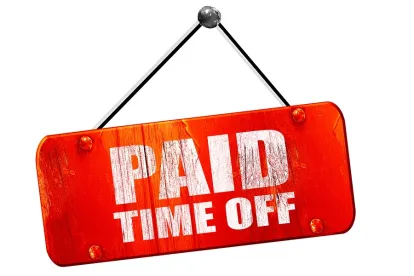For much of the ongoing COVID-19 pandemic, many California employees have utilized leave entitlements through federal, state, and local paid sick leave statutes and ordinances. As of December 31, 2020, however, the federal Families First Coronavirus Response Act (“FFCRA”), California’s COVID-19 supplemental paid sick leave (“CSPSL”) — and many local supplemental paid sick leaves (“LSPSL”) — have expired. With coronavirus cases still surging nationwide and no additional guidance on the new exclusion pay requirements under the Division of Occupational Safety and Health’s (“Cal/OSHA”) COVID-19 emergency temporary standards (“ETS”), California employers are left wondering what paid leave laws may apply to their employees in 2021.
FFCRA
On December 31, 2020, the Department of Labor updated its guidance on FFCRA leave for employers. Although the FFCRA has expired, Congress’ new legislation, the Consolidated Appropriations Act, 2021 (“CAA”), extended tax credits for employers who continue to voluntarily provide paid FFCRA sick leave and expanded family and medical leave to employees until March 31, 2021. Thus, although employers with fewer than 500 employees nationwide are no longer required to provide such leave after January 1, 2021, they may voluntarily continue to do so. If voluntary leave is provided, it must be used for the same purposes and subject to the same conditions as originally outlined in the FFCRA.
CSPSL
CSPSL’s expiration was tied to FFCRA’s expiration. Accordingly, the leave entitlement under CSPSL also expired on December 31, 2020. After that date, no employee may begin receiving CSPSL. However, employees who already started receiving CSPSL prior to January 1, 2021 may continue to take the leave they are currently on even if that entitlement extends past December 31, 2020. For example, an employee who exhibited symptoms and was recommended to isolate on December 28, 2020 may continue to receive CSPSL benefits even if the isolation period extends into 2021. We will continue to monitor legal and legislative developments that may further impact CSPSL.
Exclusion Pay Under the ETS
Beyond FFCRA and CSPSL, almost all California employers must provide exclusion pay to employees excluded from work for certain COVID-19-related reasons under Cal/OSHA’s ETS. The ETS require employers to exclude from work any employees who (1) test positive for COVID-19, or (2) have experienced a COVID-19 exposure in the workplace. If an employee is “able and available to work” and the exposure is work-related, the ETS also require the employer to continue to provide the employee’s pay and benefits while excluding them from the workplace.
To date, the only guidance on this point from Cal/OSHA is that an employer may require the employee to exhaust paid sick leave benefits before providing exclusion pay, and may offset payments by the amount an employee receives in other benefit payments such as state disability insurance. We anticipate that Cal/OSHA will update its FAQ guidance on exclusion pay to address the expiration of leave under the FFCRA or CSPSL. Additionally, the legality of the new exclusion pay requirement and whether Cal/OSHA possesses the authority to require exclusion pay has been challenged recently in multiple lawsuits. In the absence of new developments on the exclusion pay requirement, employers should continue to provide pay and benefits to excluded employees, and should document the relevant facts and analysis supporting their determination that an employee’s exposure was not work-related if the decision is made to deny exclusion pay.
LSPSL
Throughout the pandemic, several localities implemented their own paid leave entitlements to close perceived gaps in FFCRA coverage. As a result, many of the LSPSL expired with FFCRA. Nonetheless, the following LSPSL remain in effect:
Long Beach
The City of Long Beach’s supplemental leave ordinance, which applies to employers with 500 or more employees nationally, has no expiration date.
City of Los Angeles
The City of Los Angeles’ supplemental leave order requires employers with either 500 or more employees in the City of Los Angeles or 2,000 or more employees in the United States to provide paid leave. Los Angeles’ supplemental leave will continue to remain in effect “until two calendar weeks after the expiration of the COVID-19 local emergency period.”
San Mateo County
San Mateo has extended its paid leave ordinance, which requires employers with 500 or more employees nationally to provide paid sick leave until June 30, 2021.
Sacramento
The Sacramento County Worker Protection Health and Safety Act of 2020, which requires employers with 500 or more employees nationally to provide additional paid sick leave, was extended until March 31, 2021 in both Sacramento County and the City of Sacramento.
San Francisco
The City and County of San Francisco has extended the Public Health Emergency Leave Ordinance through February 10, 2021. The Ordinance requires employers with 500 or more employees worldwide to provide paid leave.
Additional counties and cities are currently considering and will likely pass similar laws extending or re-establishing supplemental paid sick leave. Moreover, with the expiration of FFCRA, some localities may expand their existing leave laws to cover employers with less than 500 employees.
Main Takeaway
With numbers still surging throughout the state and country, the expiration of the FFCRA and CSPSL likely does not mean the end of COVID-19 paid sick leave laws. The California government presumably will re-establish some form of COVID-19 paid sick leave for employees. The new administration under President-elect Joe Biden also may attempt to revive FFCRA leave or create a new, additional paid leave entitlement. Adding further confusion is the uncertainty of whether new paid sick leave requirements will be retroactive and/or create new protections for employees who have already exhausted their leave. Thus, employers should continue to monitor any federal, state, or local legislative developments with regard to COVID-19 paid leave entitlements. Employers with any questions or concerns should consult with experienced employment counsel to ensure they are compliant with all current paid leave laws.
The legal landscape continues to evolve quickly and there is a lack of clear-cut authority or bright line rules on implementation. This article is not intended to be an unequivocal, one-size fits all guidance, but instead represents our interpretation of where applicable law currently and generally stands. This article does not address the potential impacts of the numerous other local, state and federal orders that have been issued in response to the COVID-19 pandemic, including, without limitation, potential liability should an employee become ill, requirements regarding family leave, sick pay and other issues.





 />i
/>i
